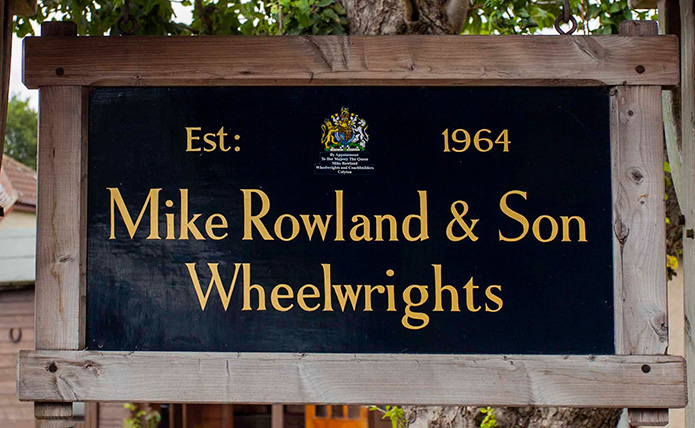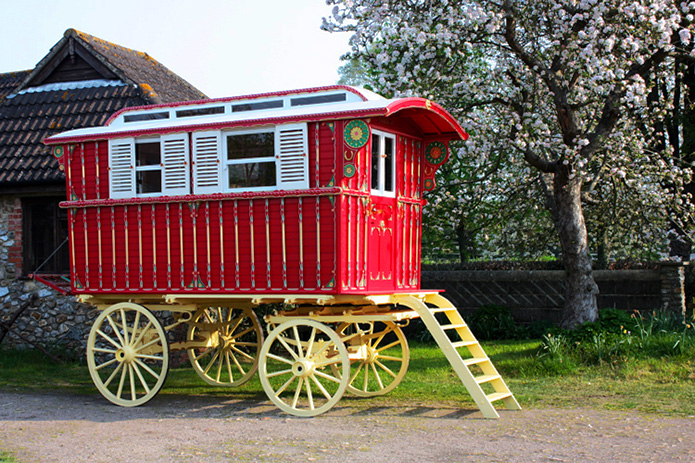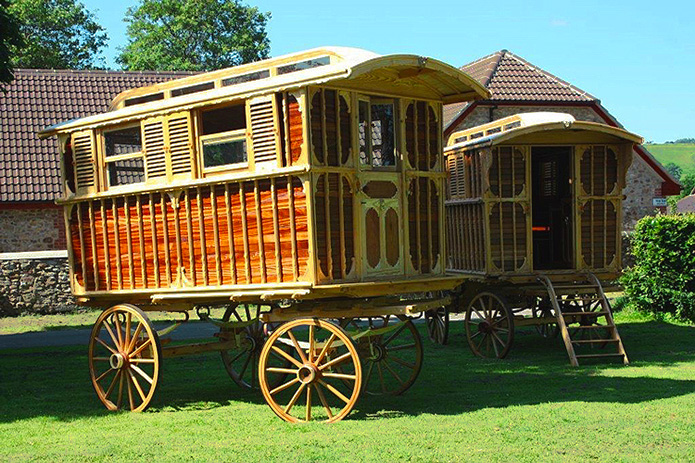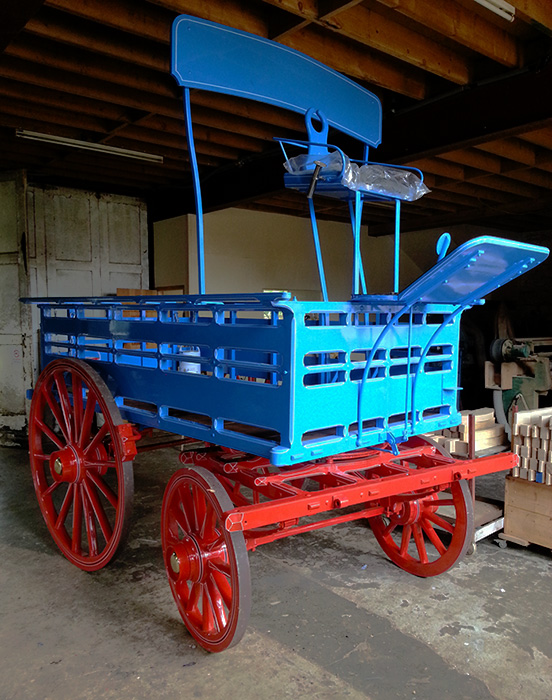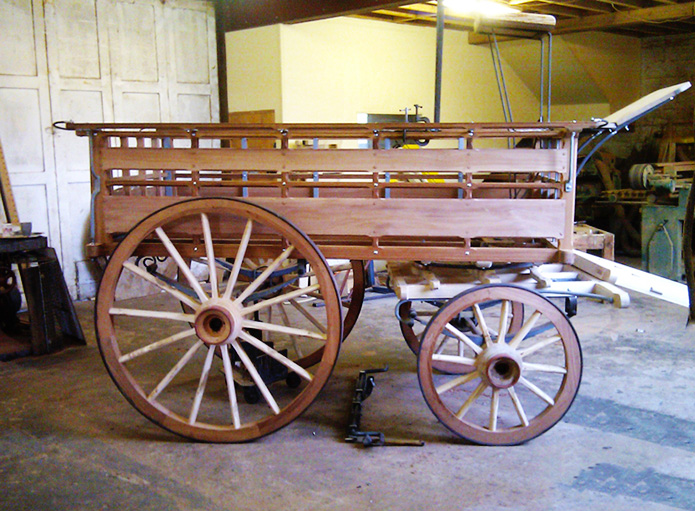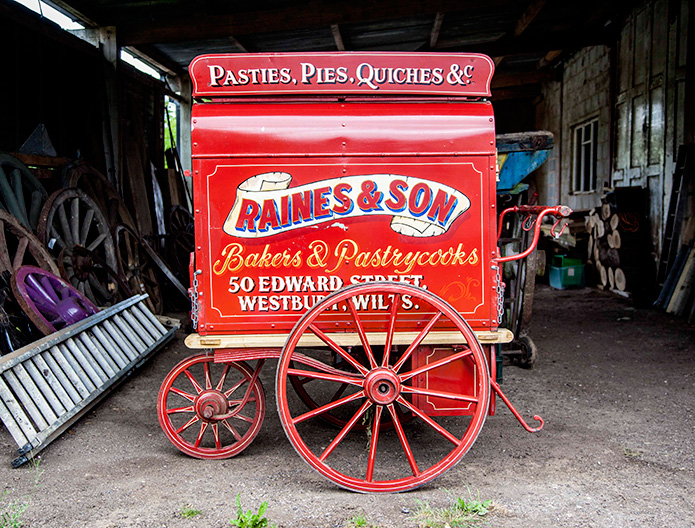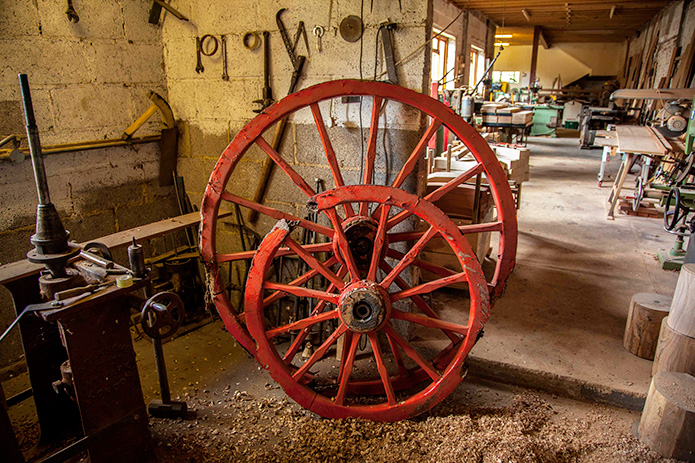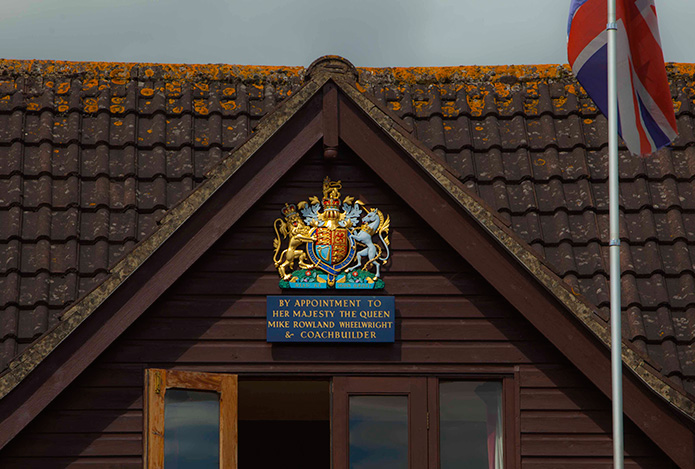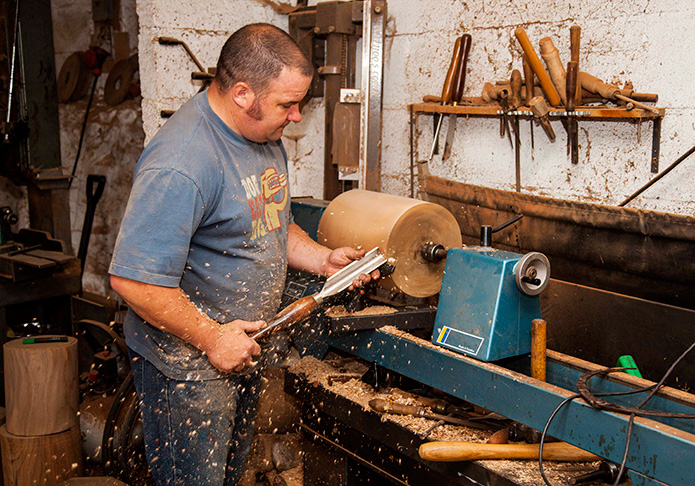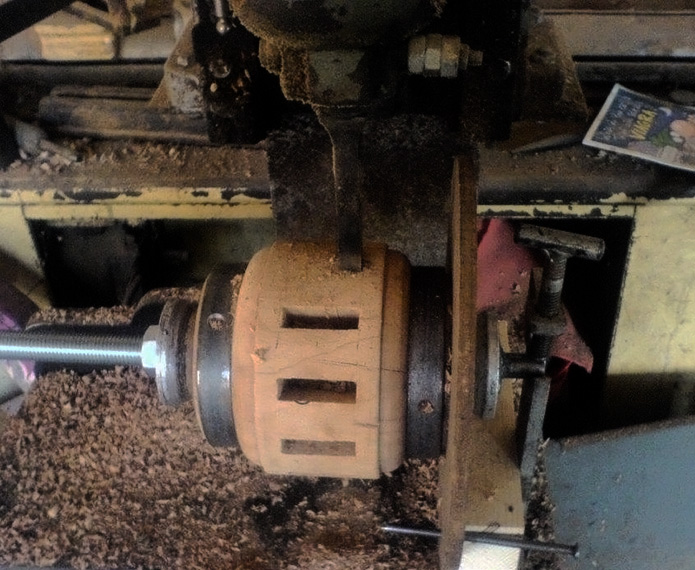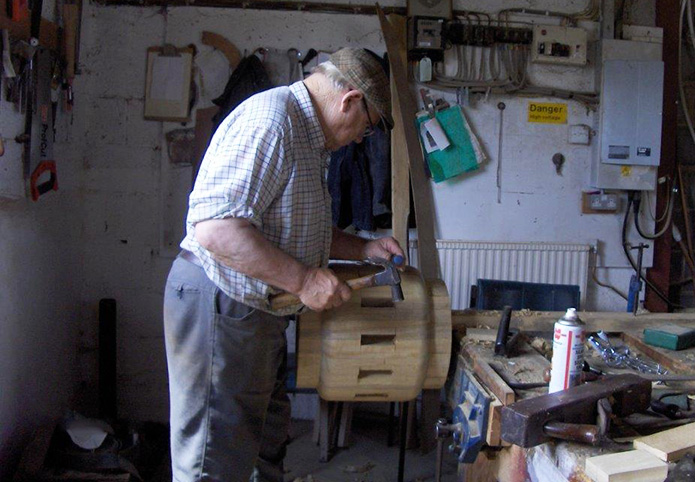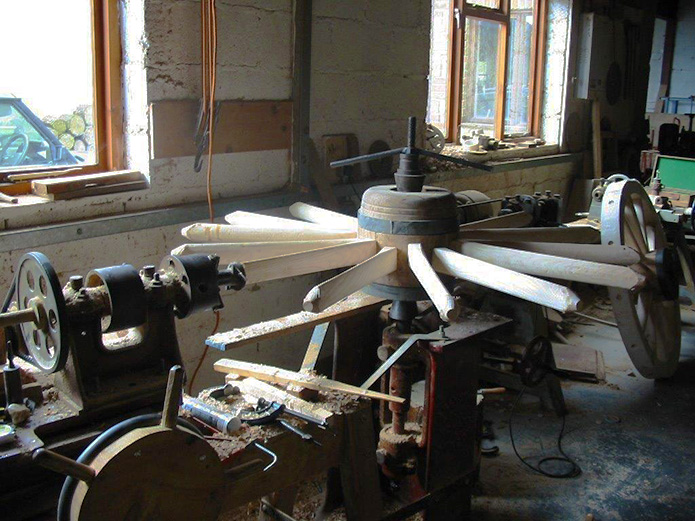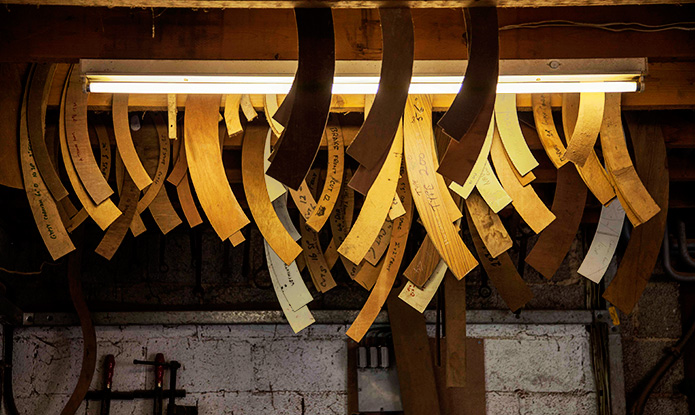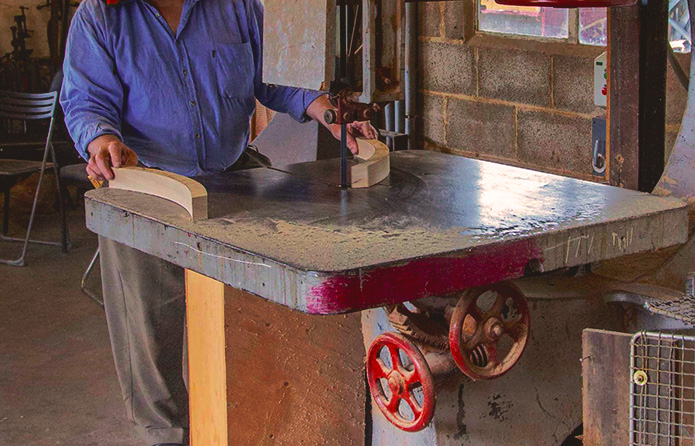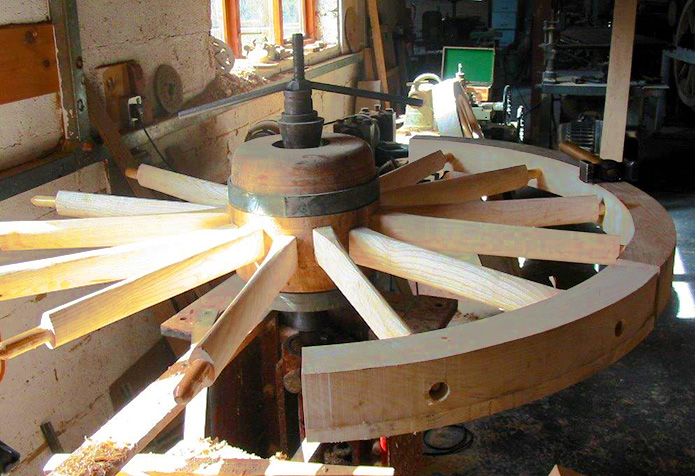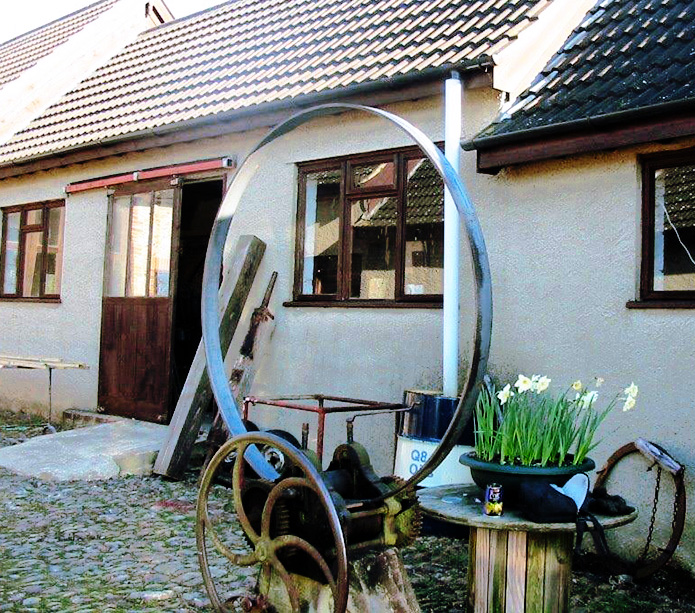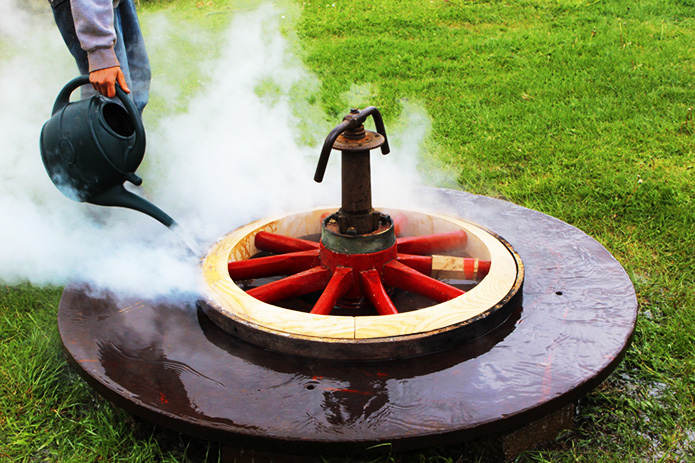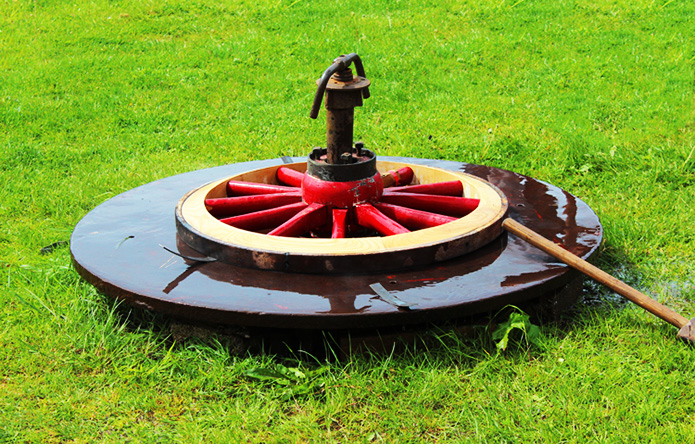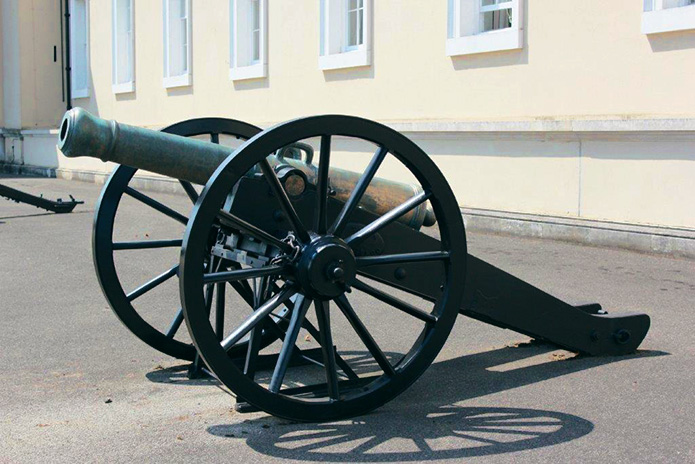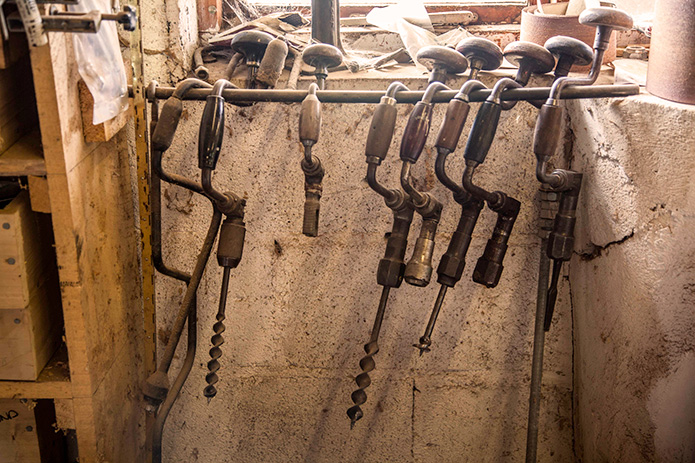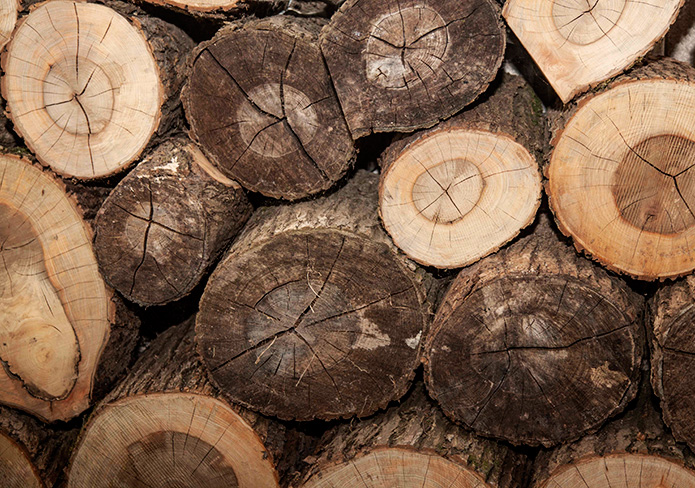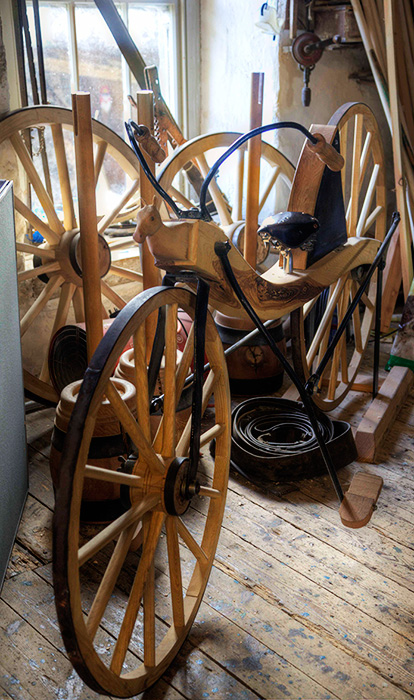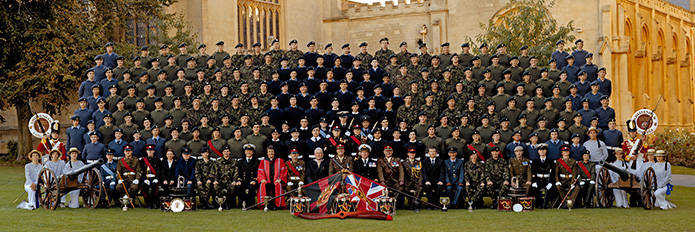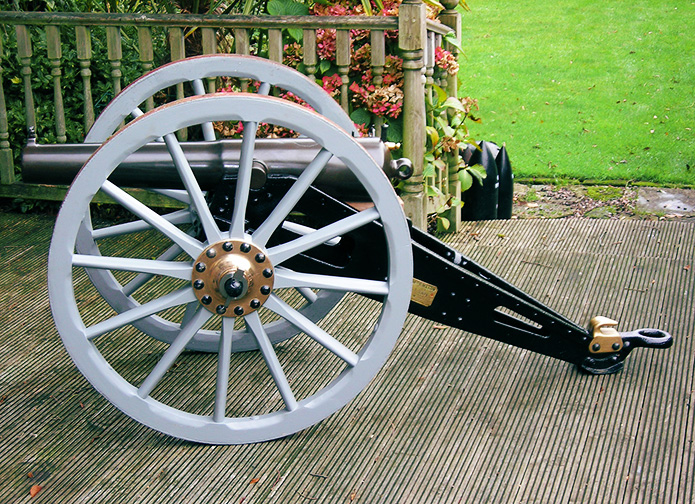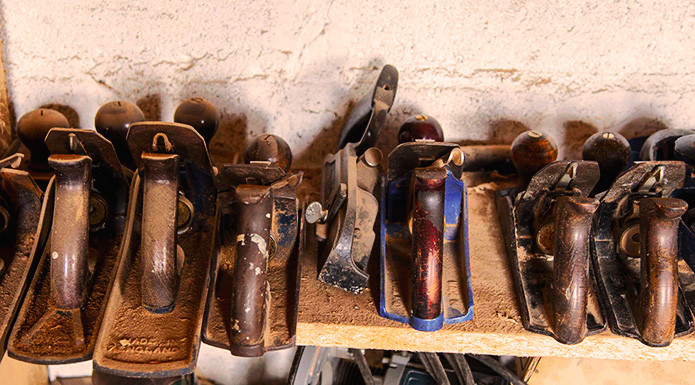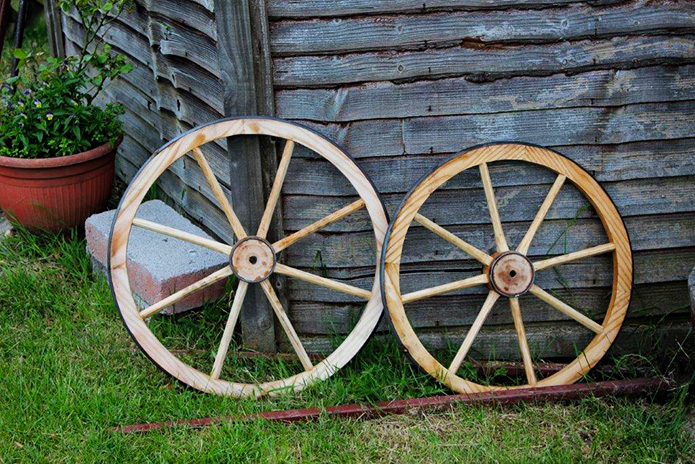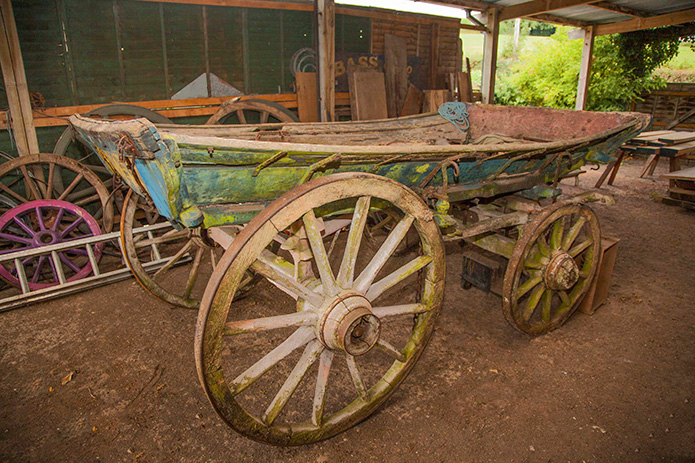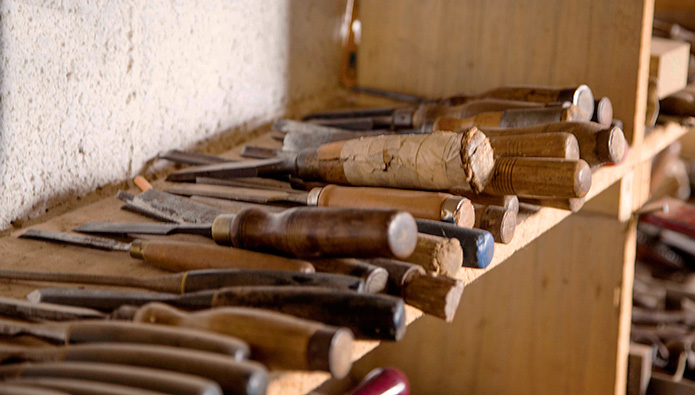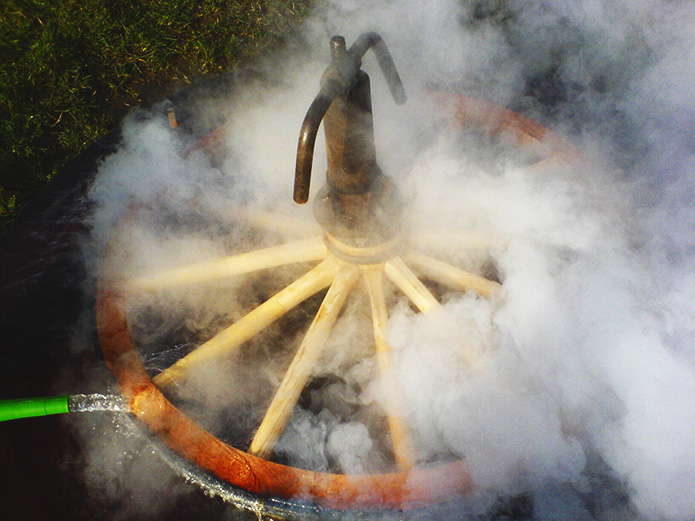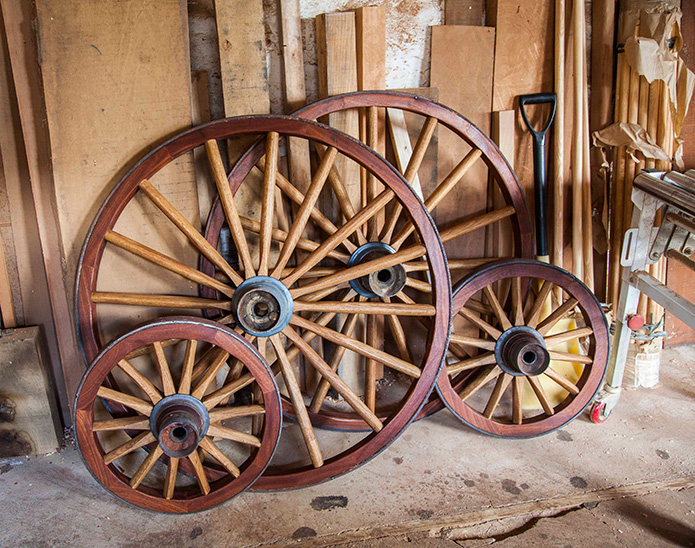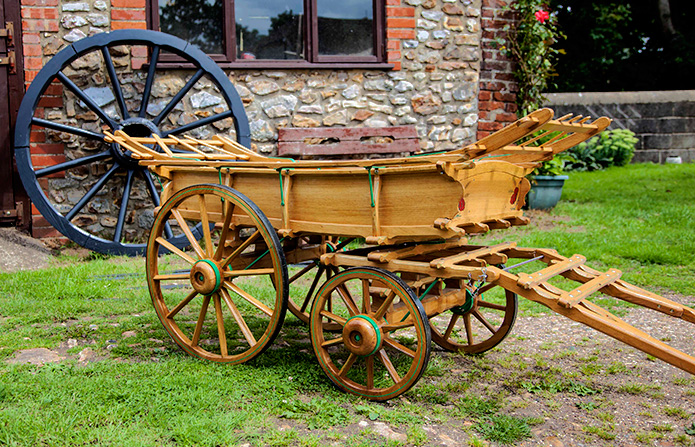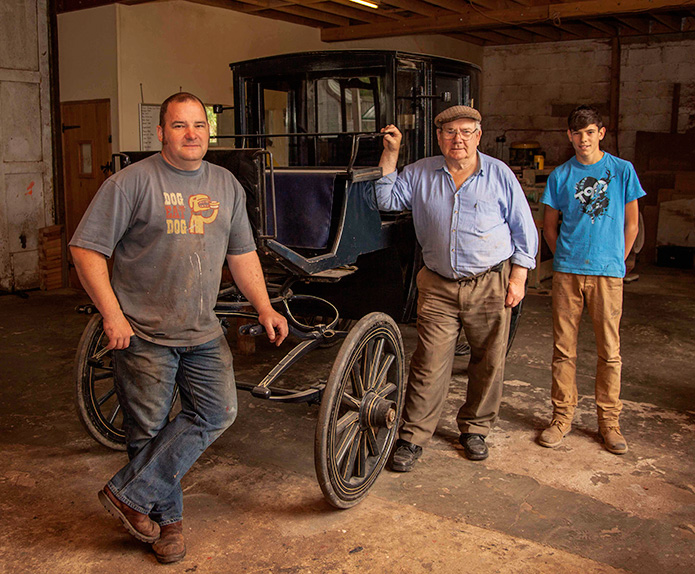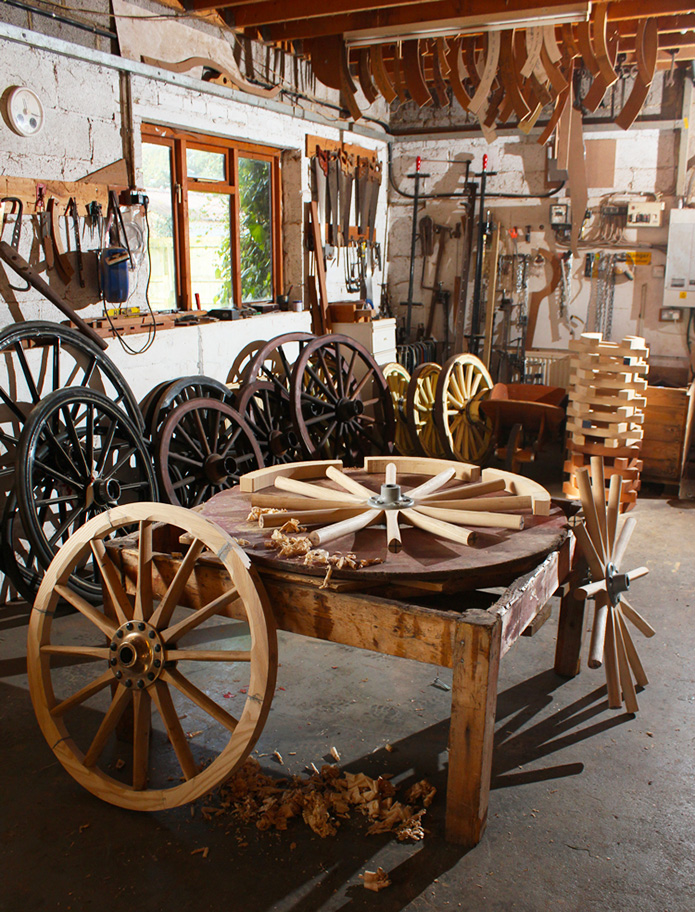
Image © Mike Rowland & Son
The wheel, with its eternal curve, simple balance and symmetry and unending usefulness, is an iconic symbol of mankind’s unique capacity to reason, design and engineer. The traditional wooden wheel is a beautiful example of this; the wheelwright’s skill is in transforming pieces of carefully selected wood and iron, using an array of tools; adze, axe, chisel, dogs, hammer, mallet, plane, shave and saw, to name a few, handworking on workbenches, spoke-horses and in saw-pits – a mix of terms, some familiar, some confusing, which further enhances the magically traditional craft of producing a sphere capable of such strength, movement and universal utility.
I’m therefore delighted to interview Greg Rowland of Devon-based wheelwrights Mike Rowland & Son, run by father and son team Mike and Greg, who are one of only two firms who hold the Royal Warrant for Wheel Wrights in Britain and are responsible for the care and maintenance of the Queen’s carriages. Wheelwrighting has been in their family since 1331 AD, and they are one of the last few traditional wheelwrights in Britain. Greg not so long ago appeared on the Channel 4 series ‘How Britain Worked’ to teach presenter Guy Martin the art and science of traditional wooden wheel making. In our interview, Greg discusses his trade (he prefers to call it a ‘trade’ instead of a ‘craft’) and how it’s changed over the past century since the demise of the horse and cart, provides some insights into his working methods and his thoughts on what the future holds for the trade. We hope you enjoy reading…
Firstly, to those readers who aren’t familiar with what a wheelwright does, can you explain what you do?
A wheelwright today practises the ancient, prehistoric, in fact, trade of constructing and repairing wheels for carts and wagons and other uses, and building the wagons too, using basically the same techniques that were used over 2,000 years ago; only some of the machinery used is different, such as mechanical saws in place of hand saws, mechanical lathes instead of pole lathes, but the techniques are fundamentally the same. The knowledge and skills of the master craftsman were historically passed down through the generations, from father to son, each an apprentice of the elder, just like I learned from my father.
Wheelwrighting has been in my family since 1331 AD, not always continuously, but the family line does go that far back. We were able to trace the records related to Beer Quarry in East Devon in relation to work carried out for Exeter Cathedral, and working back through the records related to purchases in the diocese, we can see that a ‘Great Wagon’ was bought by the Cathedral for 7 shillings and 6 pence (equivalent to 37.5 pence) from a member of our family. Our current business, though, has been running since 1964.
You’re known as wheelwrights, but it’s clear that your trade is quite broad; has it always been this way?
Wheelwrights have always been connected with transport and agriculture, repairing, servicing and even building entire vehicles, such as stage coaches and carriages, or machines, such as harrows, ploughs and wagons, so not just making the wheels as the name implies. The wheelwright had to be skilled in constructing the bodywork, building and fitting axles and other mechanisms. Even the upholstery and paintwork, down to the coat of arms (if the client was a landed gent, rather than simply a local farmer), was often undertaken by the same individual wheelwright.
The wheelwright was therefore a skilled carpenter and joiner, furniture maker, house-builder and ‘hedge’ carpenter (servicing farming needs, such as wheelbarrows, fences, gates and posts), a cooper (making beer barrels for the local inns and buckets), and a millwright (constructing and repairing mill wheels, sails and grinding mechanisms for the local mills). They were often ‘commissioned’ by the local community for a child’s toy and very often acted as the village undertaker; coffin-making an obvious related skill. They serviced the community literally from beginning to end!
The wheelwright could be described as a highly skilled ‘jack of all trades’, an astute mind, an eye for detail and a real accuracy when often only working with ‘rule of thumb’, meant he was a master of all those trades as well. The wheelwright, therefore, had a kind of rural monopoly, especially in small remote rural communities, which there were far more of a couple of centuries past; they were a one-stop shop for a multitude of needs. Wheelwrights worked closely with blacksmiths (and at times were the blacksmith) often working in the same or neighbouring premises, quite often from an inn, or on a coaching route to capitalise on passing trade.
At the start of the 20th century there were over 23,000 people employed as wheelwrights in Britain; how many do you estimate are working today?
There is still a demand for the wheelwright today, albeit a drastically reduced one. As agriculture has become increasingly mechanised and vehicles increasingly motorised, wood workshops and smithies have been transformed into modern garages and factories, and the artisanal skill and generational knowledge of the traditional trade has been reduced to only 20 or so wheelwright businesses in Britain today, employing 50-60 wheelwrights, compared to one in every village, and three or four in every town, a couple of centuries ago.
The pace of the decline in demand for the traditional wheelwright was strongest in the 1920s, and at this time wheelwrights were forced into diversifying into other trades, such as motor body building, undertaking, ladder making, making tool handles, gates, blacksmithing and general carpentry.
However, things have stabilised in recent years, and the remaining wheelwrights find themselves generally fully occupied (although there are peaks and troughs), especially for wheels used on horse-drawn vehicles, vintage cars, for horse-related pursuits, historical re-enactments and living histories, amongst other uses.
Given the demise of the trade over the past century, who are your typical clients, and what type of work do you normally carry out today?
I think the demise of the horse and cart was a major problem for the trade over the past century, but it is making a bit of a comeback. More and more people are using horse and carts, as show drays (heavy wagons pulled by shire horses, and used in country fairs, for example), as pleasure vehicles (carriage driving is very popular these days), and there has also been a resurgence in farm wagons.
We’re finding more and more farmers, even younger farmers, are using horse-drawn equipment for doing tasks around the farm, such as ploughing, rolling the ground, sowing crops and turning hay. It’s not the larger commercial farms, but medium-sized and small farms, and smallholdings, where farmers are able to do some tasks without having to always use the tractor, so carts and wagons are required to complement some of the implements being used. Also, we’re finding that these farming practices are well-received by holiday-makers visiting the farms staying in converted farm buildings, where they can see the shire horse and wagons being used, and it really creates a nostalgic feel for them, and makes the holiday a lot more authentic. In a similar way, gypsy caravan holidays have been through a resurgence, and going on holiday and staying in a traditional gypsy caravan, and riding along the country lanes, is become very popular. As the traditional horse and cart becomes more popular, then our trade has to grow to support it, which is a good thing.
We still make and restore wheels and carts for the brewing industry, as brewers like Wadworth and Youngs still maintain traditional horse and carts for delivering beer locally to the brewery, but also for museums.
We also provide carts for promotional purposes – our half wagons, for instance, are very popular for selling produce, such as strawberries, but also people use them as carts for their Newfoundland dogs to pull. Newfoundland dogs have been used since the 18th Century, where they were kept on board fishing boats for rescuing people from water if they fell in, but also pulling heavy loads when reaching harbour-side by attaching a harness to the cart so they could take the fish to market. Nowadays, Newfoundland dogs still pull carts, but generally for exercises and competitions, but also pulling light loads around the garden.
It’s not just horse and carts we work on though either. The word ‘wright’, in its original sense meant ‘maker’, and we have to turn our hands to all sorts; it’s always been that way in the past, and it certainly is true today. We make wheels for vintage cars, such as the Ford Model T and Aston Martin, although they’re one of the hardest wheels to make; far harder than a wheel for a horse and cart, as the tolerances have to be extremely precise, as there isn’t a hub where the spokes fit into. We also make wheels for military canons and the frames as well. We provide gun run sets for cadets taking part in team building exercises, which are very popular with private schools.
In total, we make and repair about 250 wheels per year, of which about 100 are new. We don’t make as many carriages as we used to due to the competition from abroad, such as China and Poland. The horse community are very price-conscious and if it can be bought slightly cheaper from abroad they will source it elsewhere. What has happened is that a lot of our carriages get taken abroad where they are effectively reverse engineered, and then they are imported in greater numbers back into the UK, although they’re not quite up to British standards, and many of them have a reputation for being quite heavy vehicles, and are known as ‘horse killers’ as the weight literally kills the horse. They may well get better at it one day though. So for carriages, we’re more likely to be carrying out repair and restoration, than new builds, and we’ll probably work on about 15 carriages each year.
How did your relationship with the Royal Family develop after being awarded a Royal Warrant and what does being a wheelwright for the Queen involve?
A craftsman can be awarded a Royal Warrant by working for one of the three Royal households [the Queen, Duke of Edinburgh or Prince Charles] for five years. We first received an introduction from the Queen’s heraldic artist who retired to Devon near us, and he recommended us to them. Once you apply for the warrant, the matter is referred to the Lord Chamberlain and a decision is made. The Royal Warrant is granted for 1, 3 or 5 years, and then once this period expires a review takes place; we’ve just been through a review and they’re now looking a lot more closely at environmental and community responsibilities, which may be influenced by Prince Charles, as he’s a great supporter of environmental sustainability. I’m hoping we will receive a further warrant, because all our suppliers are warrant –holders too and they source their wood sustainably.
The type of work we carry out for the Queen is more restoration-related work, rather than making or painting carriages; the Queen employs a Head Carriage Restorer who oversees that, but we deal with broken wheels or carriages.
Can you briefly describe how you would make a wheel?
Making a wheel is incredibly precise work, and no two wheels are really the same – even the same cart may have very slightly different wheels on each side – and there are differences depending on whether we are making a wheel for a cart, canon or vintage car! So I can only give a simplified overview of how a traditional wooden wheel is made.
The process begins with the ‘hub’ (the central part), and for this you need perfectly dry, seasoned elm, which at first is roughly hewn, then measured, marked, cut, traced and trimmed, using a band saw, to the correct circumference, and finished by a pulley-powered lathe and chisel to ‘turn’ the hub.
Then the hub is marked, and by drilling and chiselling, the angled mortises are formed, into which the oak or ash spokes will fit (12 spokes for the front wheels, and 14 for the rear).
The mortises are angled as the spokes are ‘dished’ (slanting outwards from the centre) to strengthen the wheel, allowing wider carriages, more downward pressure, and allowing for the lateral thrust of the axle, the sideways motion created by the horses’ pull.
Tenons are cut for the spokes, using a spoke-horse, clamping each spoke, shaving the spoke to reduce mass, but not strength, firstly by means of a draw-knife and planes, then finishing with a spoke-shave.
The spoke’s foot is then driven with a sledgehammer or axe head into the hub tightly, but not so tight as to split it, and so it needs to be precisely the right angle and alignment. The spokes are then finished with a tenon saw into a circular or oval ‘tange’ or tongue, which will fit into the ash ‘felly’ or ‘felloe’, depending where you are in the country.
Fellies or felloes are the shaped blocks that make up the rim of the wheel. Two spokes fit into each, and they are made from templates depending on the size of the wheel.
Fellie wood was often worked ‘green’ (in other words, fresh and unseasoned) and adzed to get the necessary curve. Later developments in technique of bending wood, meant adzing diminished, and only two fellies per wheel were used, resulting in a much stronger wheel. Today we cut our fellies with a band saw.
Each end of the fellie needs to be exactly the right angle to make the perfect circle, and for this a bevel is used.
Each fellie is bored ready for dowelling, then wooden dowels are fitted to hold the fellies together, and with the aid of a spoke-dog tool, the fellies are fitted into the spokes. Then the wheel’s circumference is measured with a ‘traveller’ (a circular measuring device) and then a mystery amount (the wheelwright’s trade secret!) is added and the iron tyre hoop is cut to length and bent with a roller.
A number of iron ‘strakes’ were used in the past, all curved, joined all around the circumference, and nailed in, but this technique stopped around the last part of the 19th century.
The ends of the iron hoop are welded together, and then it’s heated in a fire; when it’s white hot it’s quickly fitted over the wheel and levered into place with ‘tyre-dogs’, tampers and sledgehammers; quickly as the metal is constantly cooling.
When it is in place, the entire wheel is cooled in water.
The hot expanded metal, contracts and shrinks with the cold, pulling the wheel and all its component parts together, creating the right ‘dish’, under permanent massive pressure.
The traditional wheel has changed little since ancient times. The main changes, certainly since the early 17th Century, have evolved subtly, with the wheels changing from being made of purely wood, then wood with iron, (iron ‘strakes’ as tyres, then solid iron ‘hoops’ from the mid 1800s), and eventually, into the 20th Century, factory-made wood, iron and rubber. The other main change being angled spokes replacing straight spokes, with the wheel having a ‘dished’ design for extra strength. But apart from that, it’s changed very little. The wheels we make a meant to last a hundred years or more, and we wouldn’t expect to see them again within a lifetime.
What type of wood is used in the making of a wheel and why, and where do you source it from?
Wheelwrights traditionally use English hardwoods, such as elm, oak and ash, and so historically had to have a thorough local knowledge of the available trees in the immediate area in order to source the right wood for the task, although these days we source our wood from local saw mills, which is still sourced locally though.
Wood would be chosen and felled during the winter months, ideally November through to February, when the sap is down, before it has started to move upwards. The timber would then be marked by the wheelwright, with different patterns for different pieces. Sometimes holes would be bored in the logs to begin with to aid drying and relieve tension which could lead to splitting, and then left until winter when it would be cut before being left to season. Wood would be stacked with spacers off the ground, covered and allowed to dry out, outside and then indoors. Wood cannot be rushed, the whole process takes around 4-5 years; a 3 inch thick piece of wood needs a year for every inch of thickness plus a year for good measure, literally.
Elm is very strong and perfect for the hub of the wheel, as it is cross-grained, meaning its fibres are inter-weaved, and flexible, and so the wood of choice for millennia. Elm also lends itself as well for the boards for carts and barrows, floorboards and stair-treads, blocks for pulleys and also gun-stocks. Elm’s natural resistance to wet-rot is also a good reason why it’s used for wheels, but also used for boat-building, building groynes into the sea and making water-wheels. However, it has to be completely dry when we use it for the hub, and any moisture will render the wood useless. Elm has been badly affected in Britain due to Dutch Elm Disease, but it mainly affects mature trees – those with a diameter in excess of eight or nine inches – which doesn’t affect us, as we only require elm with a diameter of eight inches or less.
Oak was used by wheelwrights as it is extremely strong and could cope well under extreme compression, so ideal for the spokes of a wheel. Ash is extremely flexible and shock absorbent, so makes the perfect wood for the felloes of the wheel. Nowadays, due to the cost of oak, we also use ash for the spokes of the wheel as well. In the days when wheelwrights made other items they would have used beech and horse chestnut for making wooden objects, the latter most notably for dairy buckets.
Have you had any unusual commissions for work?
We’ve certainly had some variety over the years. Earlier in the year I took part in a TV programme called ‘How Britain Worked’ with the motorcycle racer and TV presenter Guy Martin. Guy wanted to make a replica of the 1839 MacMillan velocipede bicycle, also known as a boneshaker, because of its uncomfortable ride, at the newly refurbished Gayle Mill, near Hawes in the Yorkshire Dales, and I was asked to make the wooden wheels for the bike, which was captured on film. Guy wanted to make it using technology from almost two hundred years ago, so the wood for the bike frame and wheels came from an Ash tree, cut using a cross cut saw powered by a steam engine, and the Mill’s Victorian machinery was used to cut the frame. The bike is now on display at the Mill. It was such a good experience all round, that I was invited to carry out lectures on wheelwrighting at the Mill, and I have invited the guardians of the Mill to our workshop.
We’ve also done other work for TV and films such as making 40 wooden barrels and 20 wooden buckets for the film Gladiator; we created wheels and an axle for a TV documentary exploring the process of recreating a full-size Roman trebuchet. We also made some items for the historical-fantasy TV mini-series Gormenghast.
I’ve worked on quite a few watermills for restoration purposes, making spoke and hubs, in fact the complete wheel including the ironwork and woodwork, rebuilding them exactly as required, depending on whether overshot or undershot. I make canon wheels for Sandhurst Military Academy for the parade square, as well as making the frame for a wooden bodied canon.
I have a secret project I’m working on that I can’t really tell you about involving a fantastic barrel dating back to 1734.
You come from a long-line of wheelwrights; what age did you make your first wheel and was it always your plan to join the family business?
In fact, wheelwrighting wasn’t initially my calling; I left school when I was 15 to join the army, which is all I ever wanted to do as a kid growing up. During my time in the army I qualified as a Land Rover mechanic and also apprenticed as a blacksmith. After five years or so, after I’d grown up a bit and knew more about life, I knew it wasn’t a long-term career for me, so I set up my own blacksmithing forge at the age of 21. That didn’t really work out, so I joined my father’s business and carried out an apprenticeship with him, and made my first wheel when I was about 22 or 23, which was about twenty years ago. After twenty years, I still consider that I’m only half way through my apprenticeship – you never stop learning!
Wheelwrighting has got to be ‘in you’. Anyone can make a wheel with training, but if it’s ‘in you’ then the ‘look’ and ‘finish’ will be there, whereas a wheel made by someone who doesn’t really have an eye or flair for it, won’t quite look or feel right. When I realised I could do it, that’s when I got really inspired about wheelwrighting.
The blacksmith skills that I learned from the army were really useful, but probably the most useful thing I learned from army apprenticeship was the way of being practical. It’s not just ‘mend something because it’s broken’, it’s ‘why is it broken?’, ‘how can I prevent it from happening again in the future?’. It’s exactly the right approach for wheelwrighting, as you need to learn lessons quickly and anticipate problems before they become one. It’s not a ‘factory approach’ to wheelwrighting – every situation is different.
Given the wide variety of skills needed to become a wheelwright, how long does it take to train to become a competent wheelwright in all aspects of the work?
It takes about three years to complete a wheelwrighting apprenticeship, and you’d be known as a ‘time served wheelwright’, although it’s very hard to find an apprenticeship these days; we’ve just taken one on, but from what I’m aware, we’re the first wheelwrighting firm to take on an apprentice for ten years!
An apprentice will learn lots about making different types of wheels, but there’s so much more to learn beyond that and they’ll continue learning their entire career. There’ll always be a situation where you’re posed with a scenario that you haven’t seen before, but you’ll need to remember for the next time. For example, there so many different types of wheels, even military wheels are made differently from one country to another. Vintage car wheels also differ to cart wheels, coming in 14 spoke and 12 spoke types, which means the angles sometimes need to be worked out differently. Nothing is ever standardised in Britain either – you can have a wheel on one side of a cart which is different to the wheel on the other side – which is different to America, where everything was standardised from about the 1860s and they mass-produced their wheels in factories.
In Britain, despite the fact wheels weren’t standardised, it was quite easy to find a replacement wheel because there used to be three or four wheelwrights in every town, just like a garages or tyre shops for motor cars these days, but nowadays, replacement wooden wheels aren’t readily available, and they need to be individually made. There were also wide variations in the types and styles of carts being used around the country; the wide open lanes of Monmouthshire, for instance, would allow a wider cart to be used, whereas the tight, narrow lanes of Dorset would require a narrow type of cart, to deal with the different camber on the lanes, and also to deal with the steep-sided hedgerows. Carts would also be shaped differently for the purpose it is being used for – a cart used to stack sugar beet, for instance, would have a concave shaped floor to stop the beet from rolling around the floor and getting in the farmer’s way. The floorboards would also be laid lengthways of crossways, depending on whether and how a pitchfork would be used to shovel produce to or from the cart.
It’s all the idiosyncrasies of wheelwrighting that makes the trade difficult for a carpenter or joiner to pick up. They would no doubt have the basic carpentry skills to make wheels and carts, but they wouldn’t instinctively know why things are made and shaped the way they are depending on the purpose.
What makes a good wheelwright?
First and foremost – attention to detail, as all the joints and curves have to be absolutely perfect. It’s very difficult to put into words, but the best wheelwrights know when something looks right, and also when something looks wrong, instinctively, without having to even measure. A lot of necessary skills are basic common sense, and being capable of ‘engineering’ a solution when things don’t work quite right.
What do you find most enjoyable about being a wheelwright?
I live and breathe being a wheelwright. If I had to choose the elements of the trade that I enjoy the most, I’d say getting the job done and the satisfaction of seeing the customer leave the workshop happy. Our trademark is being able to push the cart with one finger on the flat as it’s so finely balanced, like a pram. Don’t forget – the power of a horse is only ‘1 HP’, so the cart needs to be efficient otherwise it will put too much strain on the horse. So I like seeing the customer pushing the cart with only one finger. Whilst a lot of overseas producers of carts are able to produce the carts to a certain standard, they haven’t, yet, learnt the formulas to getting the carts to run efficiently like ours in Britain. In terms of physical aspects of the trade, I like bonding the wheel, and seeing all the joints disappear.
Given there are probably only 20 or so wheelwrighting firms left in the country, and many of these are ‘one man bands’, what advice would you give to someone wishing to enter the industry?
Anybody entering the trade needs to know that it won’t make them rich, and it’s not as romantic as it seems, what with it being a traditional trade and conjuring up romantic notions of the past. It’s impossible to make lots of money due to the restrictions on getting speed of turnover of work, which is what you need to make a trade profitable; we’re always sidetracked onto other things. A wheel could take a whole day to make, and that’s working flat out, and we might make £400, but it’s not physically possible to sustain that momentum as it’s really strenuous work.
Having considered that, and someone is desperate to become a wheelwright, I’d suggest that they speak to the nearest wheelwright available to them and find out more about what it involves. Go and visit them in person and talk to them about it. Read about wheelwrighting and research it thoroughly. Timing is key; we took on an apprentice because a young lad approached us who showed clear commitment to want to become a wheelwright, but also because he approached us at a fortuitous time when we were exceptionally busy.
Finally, how do you see the future for wheelwrighting in Britain?
If the current trend is anything to go by, then I think we’d be okay in the future. Work is increasing overall, and we’ve probably been the busiest we have for 10 years. I think people generally are overwhelmed with technology in their lives, and they want to relax and derive pleasures for simple, traditional pursuits, and want some nostalgia in their lives, hence why we’re very busy making hand carts and half-sized farm wagons, whether for farming, smallholdings or for promotional purposes, such as selling strawberries at country fairs.
I think the internet will play an increased role in the future. Whereas we used to win business from word of mouth, most enquiries these days are from the internet. We’ve won various commissions over the internet, such as restoring a British military wagon in Tasmania, a set of wheels for Australia, wheels for a fire engine in a museum in Sweden, wheels for show drays in Germany, plus other projects in Canada and the USA. We’ve even had enquiries from China to make a new state carriage, but I think they are expecting to buy one ‘off the shelf’ from a catalogue, but it doesn’t really work like that – a state carriage would take 3 months planning and 6 months to build!
The other thing that needs addressing is skills shortages for future years. At the moment we have enough wheelwrights for the amount of work there is available, so we can’t train up too many as there won’t be enough work to go around, but we do need to think about the next generation. I think support from Government and Livery Skills Council will be required to safeguard the craft. There isn’t a national apprenticeship scheme for wheelwrights. We’ve just taken on a local lad, aged 16, and I believe he’s the first wheelwright apprentice in 10 years. He’s also combining it with an apprenticeship as a joiner at the same time, which he’s doing at Exeter College – the skills compliment each other really well. The Livery Skills Council is paying for the apprenticeship. I need to put together a framework for the apprenticeship, and will eventually write and test the exam, which probably isn’t ideal, but there aren’t many people qualified to do this any more! It’s a Government pilot scheme to help keep rural skills alive. Once the framework is set up, it’s hoped it can be rolled out to other crafts nationally, but we’re only just in the first year so it’s still early days.
Thanks to Greg Rowland for taking time out of his busy schedule to answer our questions. For more information on wheelwrighting by Mike Rowland & Son, or if you’re considering commissioning a piece of work, please visit Greg’s website by clicking the link below:

